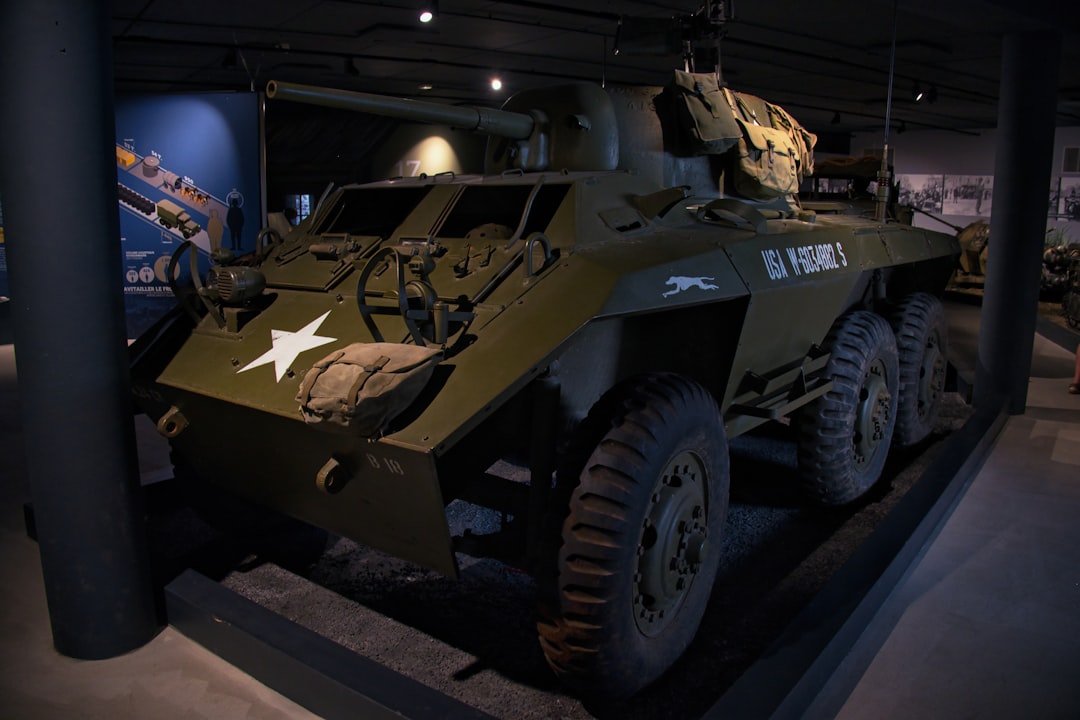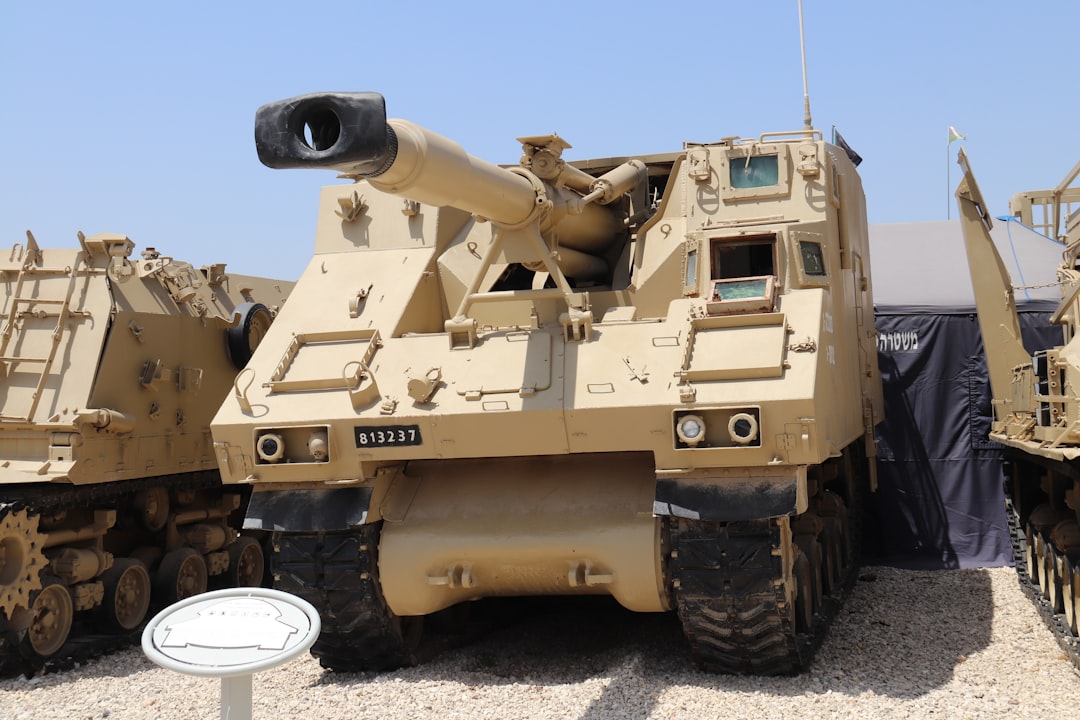

Engage prospects with a scan and streamline customer engagement with FREE QR code marketing tools by Sona – no strings attached!
Create a Free QR CodeFree consultation

No commitment

Engage prospects with a scan and streamline customer engagement with FREE QR code marketing tools by Sona – no strings attached!
Create a Free QR CodeFree consultation

No commitment
In today’s digitally driven world, QR codes have evolved from a novelty to a strategic powerhouse in bridging offline engagement with online action. For armored vehicle manufacturers, QR codes deliver instant, secure, and trackable access to product specifications, customization options, certifications, and service workflows without requiring an app download or complex setup. Buyers, inspectors, and operators can move from a physical asset or document to rich digital experiences in one scan.
When applied thoughtfully, QR codes reduce friction in sales and operations. They replace outdated analog tools such as printed brochures or manual inquiry forms, and they feed engagement signals into your CRM and analytics stack. The result is better visibility into buyer intent, faster follow-up, and a more transparent technology experience for decision-makers in defense, law enforcement, cash-in-transit, and specialized commercial sectors. For connecting offline touchpoints to pipeline, see Sona’s blog post on offline attribution.
By embedding QR codes across displays, demo vehicles, technical documents, and post-sale materials, manufacturers can modernize the entire buying journey. Each scan becomes a measurable touch that reveals who is interested, what information they value, and how best to continue the conversation with tailored content, pricing, and timelines. For modeling touchpoints, Sona’s post on multi-touch attribution offers helpful context.

QR codes bridge the gap between physical sales assets and online information, making it easier to drive actions such as specification lookups, quote requests, and onboarding. In a high-consideration market where buyers expect rigor, speed, and security, QR codes enable instant access to dynamic spec sheets, ballistic and blast certifications, 360-degree walkthroughs, and integration guides that would otherwise require a salesperson or a printed brochure. This reduces the drop-off that occurs when prospects must wait for email follow-up or search for information on their own. Explore sector tactics in Sona QR’s automotive guide.
Armored vehicle manufacturers can use QR codes to transform offline moments into measurable digital engagement. Replace static brochures with scannable panels on demo vehicles, replace paper inquiry forms with secure lead forms, and replace ad hoc email follow-ups with automated workflows. Every scan captures context such as where and when interest occurred, which model prompted engagement, and which assets best convert. That data closes the visibility gap that often hinders forecasting and resource allocation.
As you phase out analog processes, you gain a single, connected view of buyer progression. That view enables proactive retargeting by persona, region, and use case, and it supports rapid updates when regulations or product lines change.

The armored vehicle sector operates in a high-stakes environment where accuracy, security, and speed influence every decision. Buyers often encounter disconnected touchpoints: printed spec sheets, temporary booth signage, and emailed PDFs that are difficult to update and impossible to track. QR codes close this offline-to-online gap by making every physical asset actionable and measurable.
Speed and simplicity are paramount when customers evaluate complex builds and compliance requirements. With a QR code, a buyer scans and immediately reaches the correct specification set, video proof of performance, or an RFP-ready form. No app download is needed, and no manual handoff is required. This is especially valuable when teams are in the field or on crowded show floors where attention is limited and timelines are tight.
Applied to materials common in this sector, QR codes elevate the value of appointment cards for facility tours, vehicle window placards that point to detailed build sheets, and field maintenance guides mounted in the cabin. They create direct lines from physical evidence to digital proof, enabling both speed and accountability.
Armored vehicle manufacturers serve multiple stakeholders, from defense procurement teams to municipal buyers and corporate security directors. Different QR code formats ensure each stakeholder can act quickly in their preferred channel. The right format also increases the quality and completeness of captured data.
Dynamic QR codes are particularly valuable in this vertical because product data, certifications, and legal disclaimers evolve. With dynamic codes generated through platforms like Sona QR, you can update destinations, A/B test content, and segment scans by campaign, all without reprinting or rewrapping vehicles.

Growth opportunities hide where traditional tracking fails. In armored vehicle sales, these moments appear in showrooms, at defense expos, during private demos, and inside vehicles after delivery. QR codes allow manufacturers to convert unknown foot traffic into known, segmented audiences and to capture intent signals at every critical touchpoint.
In showrooms and dealer lots, codes on windshield spec cards or door panels can launch a configurable spec experience, a ballistic materials explainer, or a secure quote request. At trade shows, codes embedded in booth signage and product placards can deliver multi-language content, enabling buyers to access materials in their preferred language and follow up later with a saved link.
By designing QR touchpoints around high-intent moments, you capture data that otherwise evaporates. This lets you prioritize follow-up for accounts that demonstrate urgency, such as a procurement officer who repeatedly scans pricing sheets or a fleet operator who accesses maintenance guides during critical deployments.

QR codes deliver their greatest impact when tied to specific business outcomes. In armored vehicle manufacturing, the most valuable use cases blend buyer enablement with measurable intent capture. They modernize analog processes, preserve data integrity, and accelerate movement through the sales funnel.
Before launching, confirm what action each code should trigger and how you will measure success. Align every deployment with a downstream step: a configurator session, a quote request, a demonstration booking, or a service transaction. Then brand and place each code where it will be seen and used, and let the data guide your next iteration.
Each use case connects offline interest to digital tracking. With the right tagging and analytics, you can see which content accelerates decisions, which placements outperform, and where to invest for the next cycle.
A core challenge in this sector is losing sight of high-value prospects who do not complete forms or who engage at in-person events. Every QR scan, when tagged and routed properly, is a data-rich signal of intent. Use those signals to build targeted audiences and orchestrate relevant follow-up across email, ads, and sales outreach.
Start by creating distinct QR codes for every critical context: individual models, persona-specific content, and journey stage. Then connect each scan to your CRM with the right metadata so sales can prioritize follow-up based on demonstrated interest, not guesswork.
With this approach, your retargeting becomes precise and respectful of buyer needs. Defense procurement teams that scan compliance materials receive follow-up on certifications and testing protocols, while commercial buyers who explore accessory catalogs see content about fleet optimization and total cost of ownership.
QR codes are connective tissue across channels, making print and physical experiences as measurable as digital. When integrated across brochures, signage, demos, video, and direct mail, they reduce friction for buyers and reveal which placements generate the most value. This data informs editorial planning, inventory prioritization, and sales investment.
Brochures handed out at international defense shows can include QR codes that launch localized landing pages, live translation toggles, and downloadable data sheets. Owners can revisit these pages after the show, and your team can see which regions and personas show repeated engagement. In showrooms, point-of-sale cards can route to configurators and demo booking calendars, while TV or video signage can drive scans straight from screen to action.
Use a unified platform like Sona QR to manage codes across channels, maintain brand consistency, and sync scan activity to your CRM and ad platforms. This creates a connected funnel where offline moments feed digital growth with reliable attribution.
Launching a QR initiative is straightforward when you define the objective, pick the right code type, design for the environment, and plan for measurement. Treat each deployment as a testable asset that can be refined based on real-world data, and ensure every scan leads to a clear next step.
The following checklist offers a practical path from idea to impact. Use it to standardize execution across teams and to avoid the common pitfalls of unclear goals, poor placement, and weak attribution.
Align these steps to surface hidden prospects and to make each scan a trigger for a personalized nurture or sales follow-up. Treat QR assets as living components of your go-to-market engine rather than static design elements.
A persistent frustration for armored vehicle manufacturers is the inability to connect offline engagement with pipeline and revenue. Scan counts alone are not enough. You need to know who scanned, what they viewed, and whether that engagement progressed to a demo or a deal. Modern platforms turn QR codes into first-class analytics objects that drive better decisions and faster sales cycles.
With Sona QR and Sona.com, teams can see which assets perform by model and persona, which events create the most qualified demand, and which scans correlate with closed-won revenue. This visibility lets you invest in the materials that matter and retire those that underperform. For methodology, read Sona’s post on revenue attribution, and use Sona’s account identification guide to connect scans to accounts where compliant.
By moving beyond generic web analytics, you turn every scannable asset into an instrumented touchpoint. That clarity reduces wasted spend, improves funnel forecasting, and keeps teams aligned around what works.
QR programs succeed when they are specific, measurable, and well supported by process. Avoid generic, one-size-fits-all deployments. Instead, align each code to a concrete goal, integrate it with your systems, and train your teams to activate interest on the spot.
Focus your efforts on placements and workflows that match your audience’s environment. On a busy trade show floor, for instance, the right CTA and a large, high-contrast code outperform small, design-heavy treatments. In the field, ruggedized labels with short, clear messages keep engagement high and support ongoing operations.
These techniques help you capture more high-intent moments, reduce manual work, and deliver a better, more transparent experience to buyers and operators.

Real deployments demonstrate how QR codes convert physical interest into measurable digital actions. The most effective examples keep the CTA clear, the value immediate, and the analytics robust. They also respect operational realities such as lighting, wear, and connectivity constraints.
Consider how these use cases translate to your own models, events, and regions. Each example can be adapted with localized languages, compliance nuances, and persona-specific messaging to maximize relevance and conversion.
Through creative, context-aware placements, armored vehicle manufacturers can unify brand experience, capture intent, and speed the path from first touch to closed deal.
Launching QR campaigns without tying them to business outcomes is a common mistake. Each code should exist to achieve a defined objective that can be measured. Avoid vague CTAs and low-value destinations that do not respect the buyer’s time or the context of the scan. Make sure that your code is large enough, placed in the right location, and accompanied by an instruction that spells out the payoff for the scanner.
Another frequent pitfall is treating QR deployments as one-time assets. The most successful teams iterate based on scan data. They test messages, refine placements, and retire low-performing assets. They also prepare for environmental realities. Codes placed on surfaces exposed to oil, dirt, or abrasion can become unscannable, which undermines even the best strategy.
QR codes are more than a shortcut. They are a strategy. For armored vehicle manufacturers faced with missed high-value prospects, incomplete engagement data, and slow follow-up cycles, QR codes unlock the ability to turn every showroom, trade event, spec sheet, and compliance document into a digital entry point, accelerating the buyer’s journey from awareness to conversion while capturing valuable data at every step and surfacing opportunities that otherwise go unpursued.
Armed with the right strategy and supporting technology, manufacturers can drive instant engagement, differentiate through transparent information sharing, and attribute pipeline results directly to offline actions. When QR codes are seamlessly integrated across sales and support materials, every scan becomes a discovery mechanism for sales teams, turning intent into action and accelerating growth through data-informed insight. Start creating QR codes for free at Sona QR.
QR codes have revolutionized the armored vehicle manufacturing industry by transforming complex access management into a seamless, secure, and trackable process. Whether it’s streamlining authorized personnel entry, enhancing maintenance workflows, or ensuring real-time asset tracking, QR codes eliminate manual bottlenecks and deliver instant, mobile-friendly access control that drives operational efficiency and security.
Imagine having complete visibility into who accessed which vehicle and when—empowering you to optimize security protocols and maintenance schedules with precision. With Sona QR, you can create dynamic, trackable QR codes in seconds, update access permissions instantly without reprinting, and connect every scan directly to your security and asset management systems. No more guesswork, no delays—just smarter, safer armored vehicle operations.
Start for free with Sona QR today and turn every scan into a secure, actionable event that protects your assets and streamlines your workflow.
QR codes provide instant, secure, and trackable access to product specs, certifications, and service workflows, replacing analog tools and enabling measurable offline-to-online engagement.
Manufacturers can embed QR codes on vehicles, documents, and signage to deliver dynamic specs, quote requests, and demos, reducing friction and capturing buyer intent for tailored follow-up.
Common formats include web links for specs and walkthroughs, vCards for contact sharing, forms for quotes and bookings, SMS or email for quick inquiries, and app download links.
Dynamic QR codes allow updating destinations, adding tracking parameters, and segmenting analytics without reprinting, maintaining accuracy as product data and certifications change.
Ideal placements include demo vehicle panels, showroom signage, trade show booths, maintenance manuals, warranty cards, and direct mail to capture high-intent moments.
Scan data can sync with CRM systems like Salesforce or HubSpot to trigger alerts, adjust lead scoring, automate follow-up, and build targeted retargeting audiences.
Define clear goals, choose the right QR code type, design with branding and instructions, deploy codes in visible locations, and track and optimize performance continuously.
QR codes linked to certification panels and ballistic glass samples allow inspectors and buyers to instantly validate authenticity and download up-to-date standards documentation.
Avoid unclear goals, poor placement, generic CTAs, unscannable codes due to environment, and treating QR codes as one-time assets without ongoing testing and refinement.
Codes placed inside vehicles or on service materials provide access to digital manuals, maintenance scheduling, parts ordering, and upsell opportunities while tracking operator engagement.
Use Sona QR's trackable codes to improve customer acquisition and engagement today.
Create Your FREE Trackable QR Code in SecondsJoin results-focused teams combining Sona Platform automation with advanced Google Ads strategies to scale lead generation

Connect your existing CRM

Free Account Enrichment

No setup fees
No commitment required

Free consultation

Get a custom Google Ads roadmap for your business






Launch campaigns that generate qualified leads in 30 days or less.
